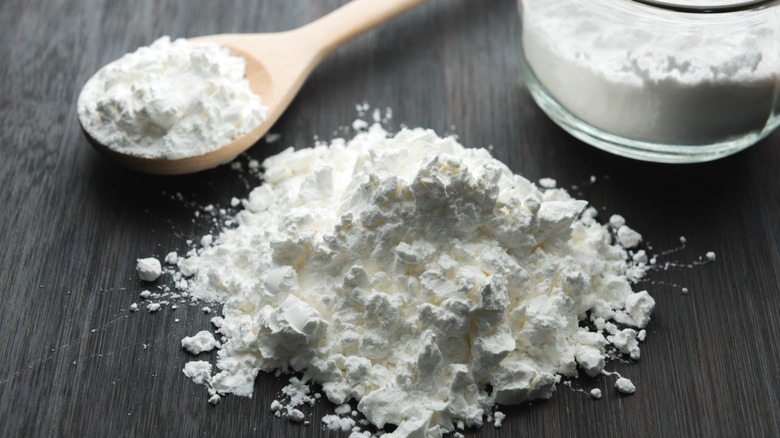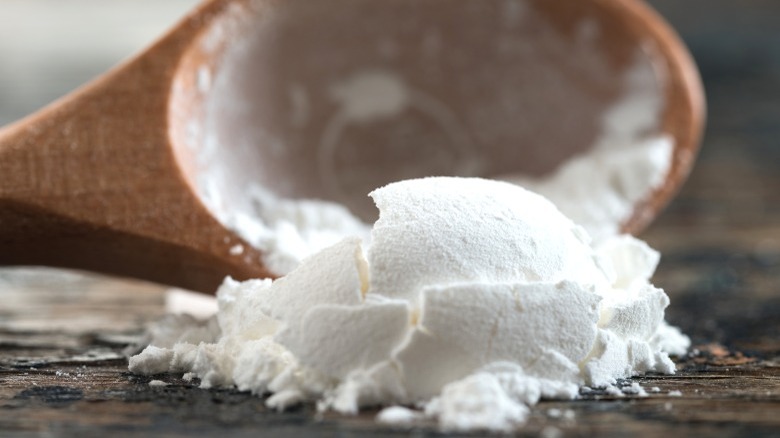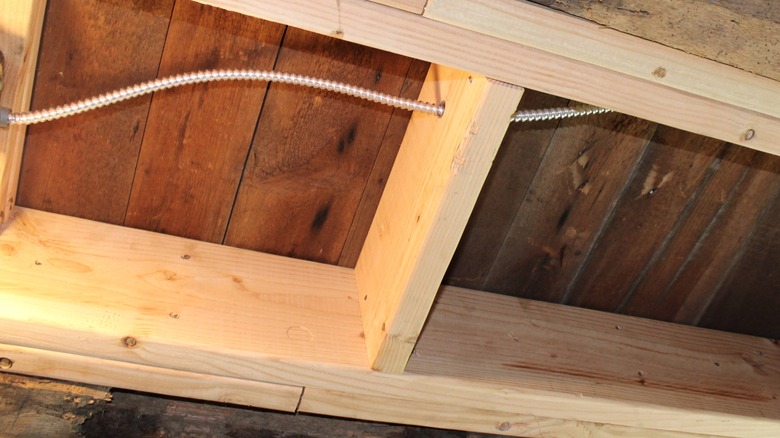Why Do People Use Cornstarch To Fix Squeaky Floors And Does It Actually Work?
We may receive a commission on purchases made from links.
Cornstarch is a staple in any home chef's culinary arsenal, but don't think its utility begins and ends in the kitchen. There are all kinds of clever ways to use cornstarch around the house to make everyday fixes quick and easy to manage. Among them, floor care is one area where this ingredient truly shines. Some people use cornstarch and water as a hardwood floor scrub, while others sprinkle it to clean spills on carpeting. And if you're dealing with an annoying floor squeak, this simple powder once again solves the issue in seconds!
Using cornstarch as a solution to squeaky floors is a classic remedy that countless DIYers have proven to be effective. The squeak and squeal often occurs when floorboards rub against each other as you walk over them. When you put down cornstarch, the powder works its way between the boards, filling the troublesome gap and lubricating the joint to dampen the noise. It's easy to apply and quick to clean up, providing one of many convenient fixes for a common household irritation.
How to manage floor squeaks with cornstarch
Hardwood flooring can shift over time, expanding and contracting as the seasons come and go and loosening from regular foot traffic or damage. Cornstarch works as a simple albeit often temporary fix to the resultant squeaking and only takes a few tools you should have on hand. Locate the squeaky floor boards, and sprinkle cornstarch along the seam where they meet. Cover the spot with a paper towel before walking around to flex the boards and let the powder sink into the gap. Once the squeak starts to fade, sweep up the remaining powder and vacuum it away.
Don't worry if you're all out of cornstarch; there are plenty of other household hacks to try. Viable stand-ins for cornstarch include baking soda, graphite powder, and baby powder, the latter of which often contains cornstarch as a primary ingredient. Use them in the same way you would apply cornstarch. Sprinkle the powder, work it into the joint, and clean up the excess. Hopefully, your hardwood squeaks will subside with these simple fixes. Should they persist, you may have to check under the floor to eliminate the noise for good.
Is cornstarch the right fix for your squeaky floor?
Cornstarch, or any other powder for that matter, can only go so far in fixing a noisy floor. In some instances, you'll apply the powder and not hear any difference when you walk on it. What a squeaky floor means in these cases is that there are worn connections or gaps in the subfloor that need attention. Poorly fastened nails or boards loosened from joists will make the tell-tale creaking as wood and hardware rub against one other. Fortunately, you may still be able to fix these from the top of the floor. If you're able to work out the correct location of the source of the squeaking, you can drive nails through the flooring from above to join the boards, subfloor, and joists, taking away the friction causing the noise. You can even buy squeaky floor repair kits, such as the Squeeek No More set, to take any guesswork out of the process.
If you can access the floor's underside via the basement or crawlspace, you have even more possible solutions to test out. Have a friend walk on the floor above to help you identify the sound's source. After finding the culprit, you can apply any number of appropriate DIY ways to fix your squeaky floor from below, like filling gaps with shims or construction adhesive. Ideally, cornstarch will be the hassle-free fix for you. But even in some of the worst cases, getting rid of that exasperating squeak once and for all won't take more than a few basic tools and a couple minutes of simple work.


